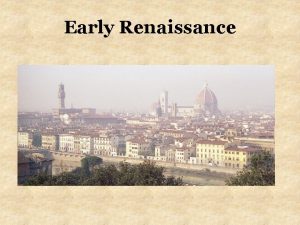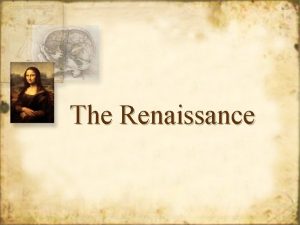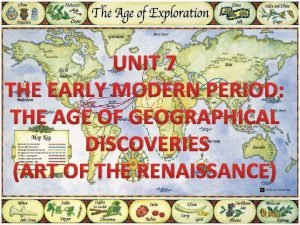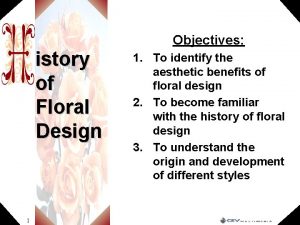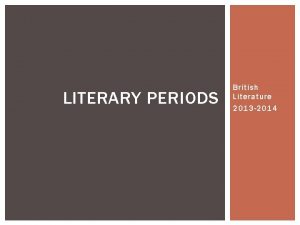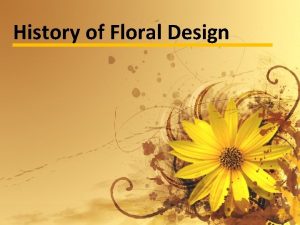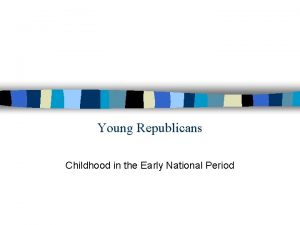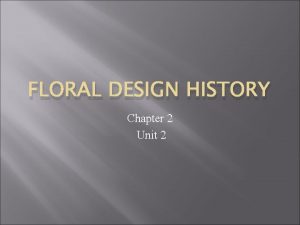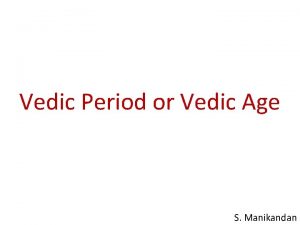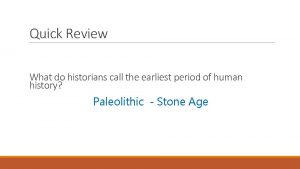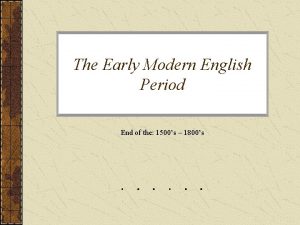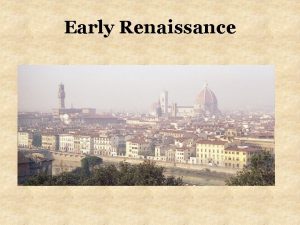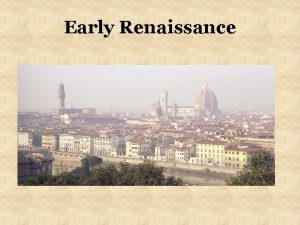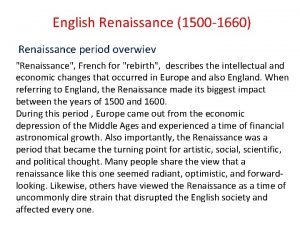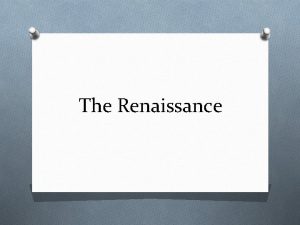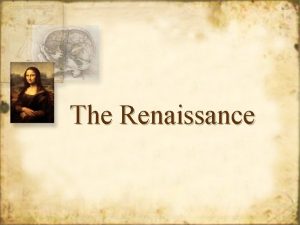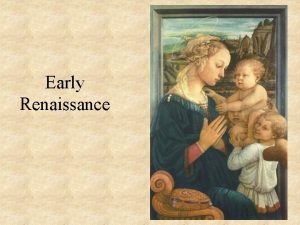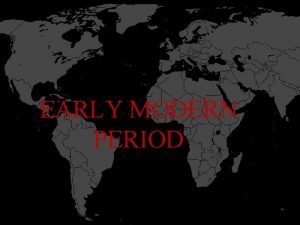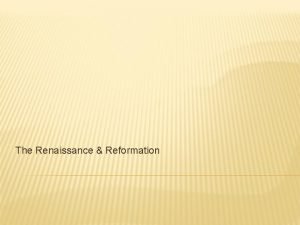Early Renaissance What was the Renaissance Period following













- Slides: 13

Early Renaissance

What was the Renaissance? • Period following the Middle Ages (14501550) • “Rebirth” of classical Greece and Rome • Began in Italy • Eventually moves into northern Europe

Goals for Life • During the Middle Ages – Find God – Prove pre-conceived ideas • During the Renaissance – Find man – Promote learning

"The Renaissance gave birth to the modern era, in that it was in this era that human beings first began to think of themselves as individuals. In the early Middle Ages, people had been happy to see themselves simply as parts of a greater whole – for example, as members of a great family, a trade guild, a nation, or a Church. This communal consciousness of the Middle Ages gradually gave way to the individual consciousness of the Renaissance. " – Mc. Grath, Alister, In the Beginning, Anchor Books (2001), p. 38 .

Humanism • Pursuit of individualism – Recognition that humans are creative – Appreciation of art as a product of man – Love of the classical past • Often rejects the importance of belief in God. -- Life could be enjoyable -- Emphasis on reason, scientific inquiry, and human fulfillment in the natural world

Causes of the Renaissance • Lessening of feudalism – Church disrespected – Nobility in chaos – Growth of Middle Class through trade • Fall of Constantinople – Greek scholars fled to Italy • Education • Nostalgia among the Italians to recapture the glory of the Roman empire

“Rebirth” in Italy • Major city centers – Venice: Republic ruled by oligarchy, Byzantine origins – Milan: Visconti and Sforza families – Florence (Tuscany): Republic ruled by the Medici family – Papal States: Ruled by the Pope – Kingdom of Naples: King of Aragon

Growth of Cities as Centers for Trade Profit-making became more important than Church doctrine To overcome guilt, profit-makers indulge in philanthropy (concern for welfare of people; seen in charity) High profits led to economic diversification (creating and selling a variety of products)

Changes in Art • Art became the way to advertise economic success • Led to increased commercial competition

Themes in Renaissance Art • Growing humanism and secularism • Number of portraits painted illustrates focus on the individual • Focus on man’s free will • Rewards for living excellently came in this life

Renaissance Art • The depiction of nudes • Imitation of nature was a primary goal • Pagan scenes and myths were popular subjects with no apologies to the Church

Early Renaissance Art • What was different in the Renaissance: – Realism – Perspective – Classical (pagan) themes – Geometrical arrangement of figures – Light and shadowing – Softening of edges – Backgrounds – Artist able to live from commissions

Spread of Humanism to the Rest of Europe • The significance of Gutenberg’s printing press • Explosion of printed materials --By 1500, 40, 000 titles printed and between 8 -10 million copies • The impact of movabletype printing presses – led to increased research and literacy
 What was renaissance
What was renaissance Period following the renaissance
Period following the renaissance Early cpr and early defibrillation can: *
Early cpr and early defibrillation can: * Early modern period dates
Early modern period dates Early american period floral design
Early american period floral design Literature eras timeline
Literature eras timeline Art nouveau period floral design
Art nouveau period floral design Early american period floral design
Early american period floral design Early national period education
Early national period education Byzantines floral arrangements
Byzantines floral arrangements European floral design history
European floral design history Introduction to vedic period
Introduction to vedic period What do historians call the early period of human history
What do historians call the early period of human history Early modern english period
Early modern english period
